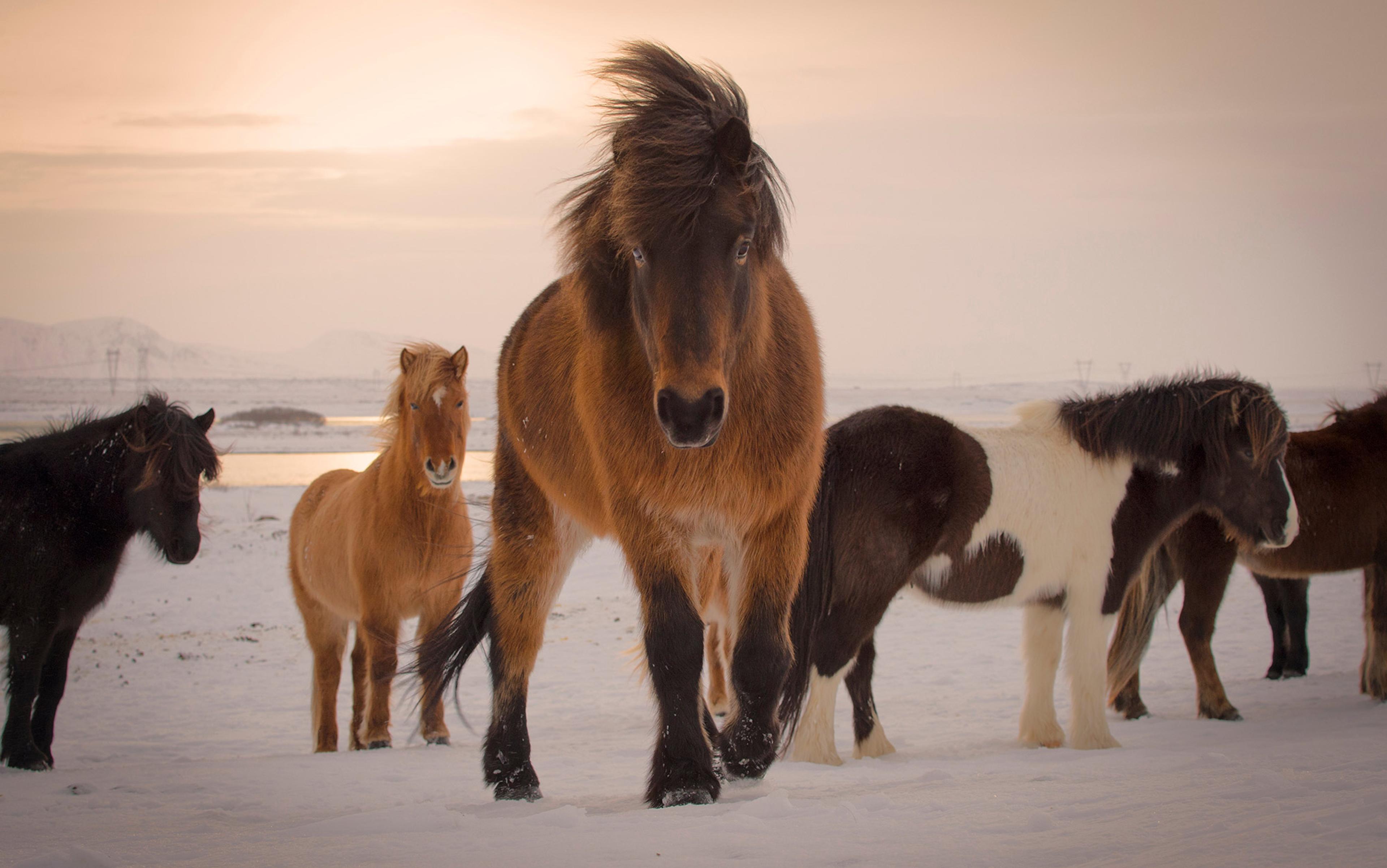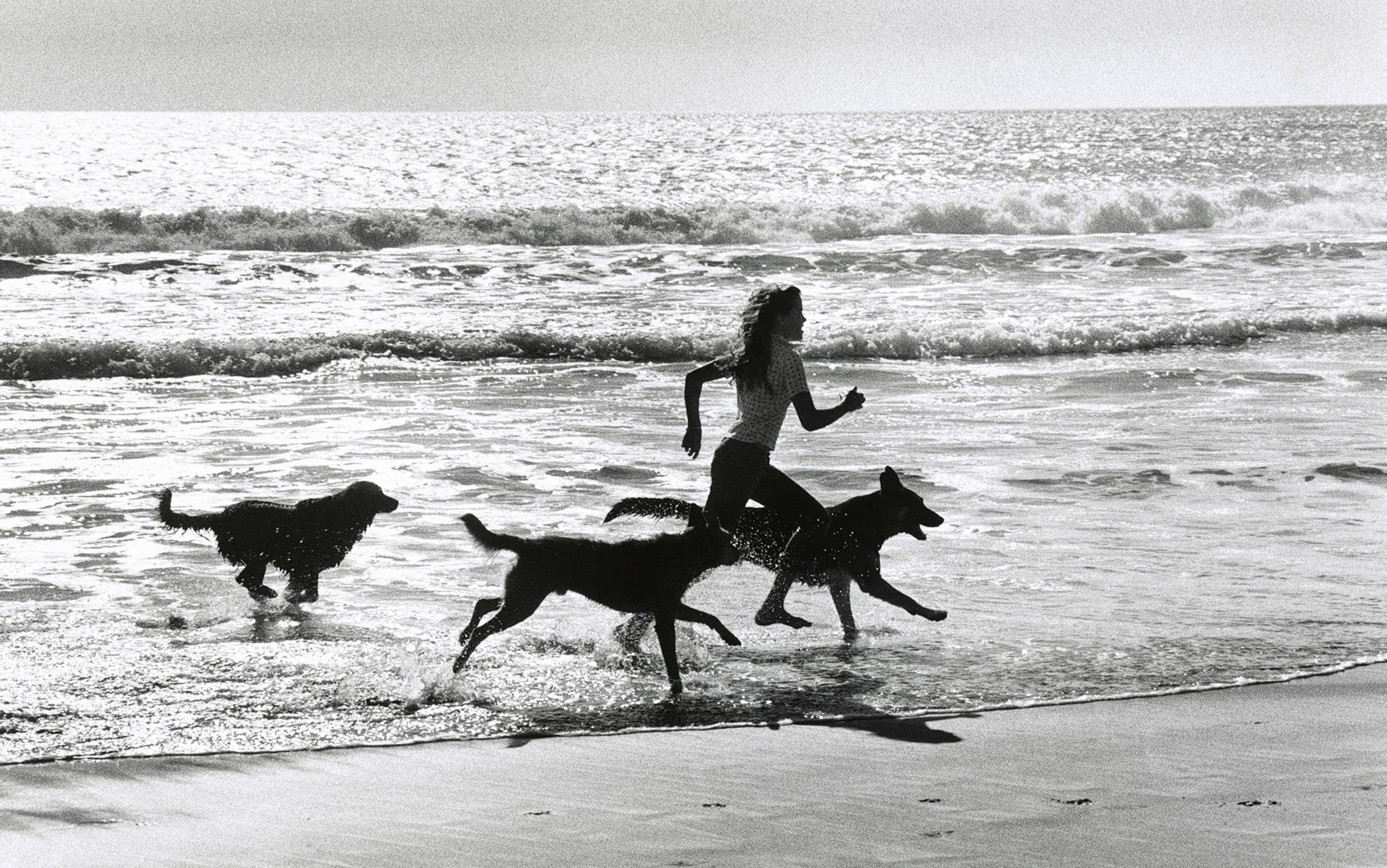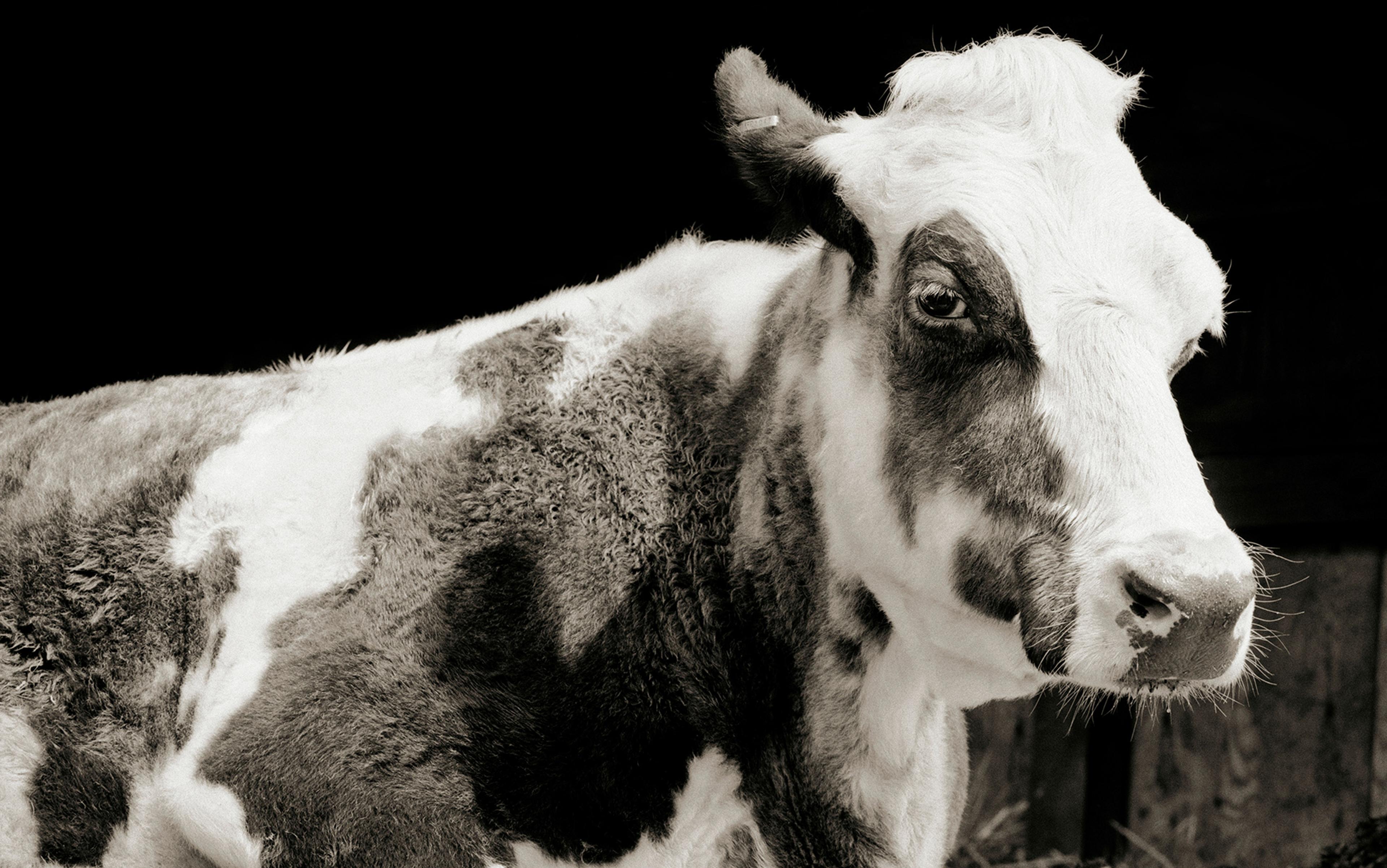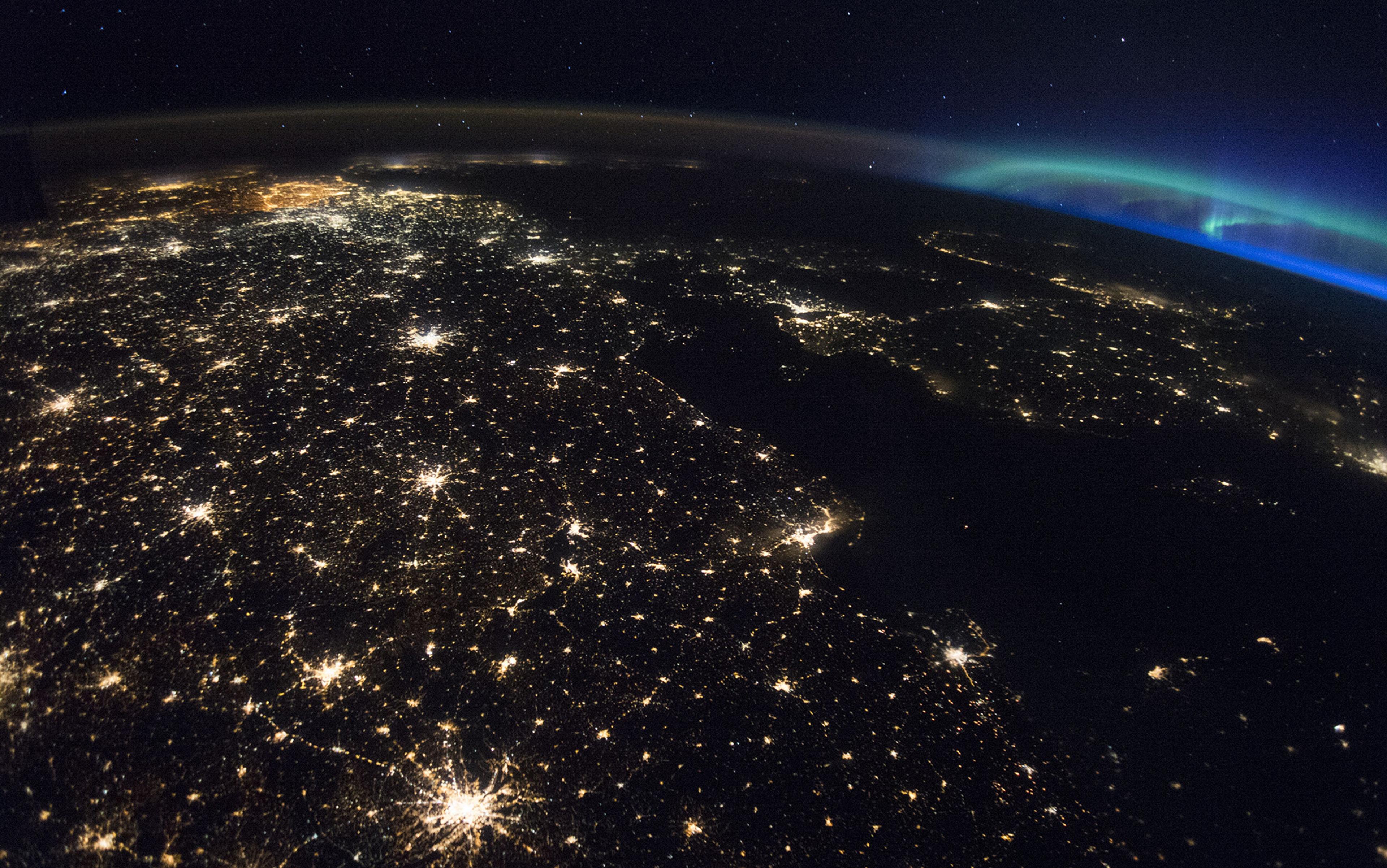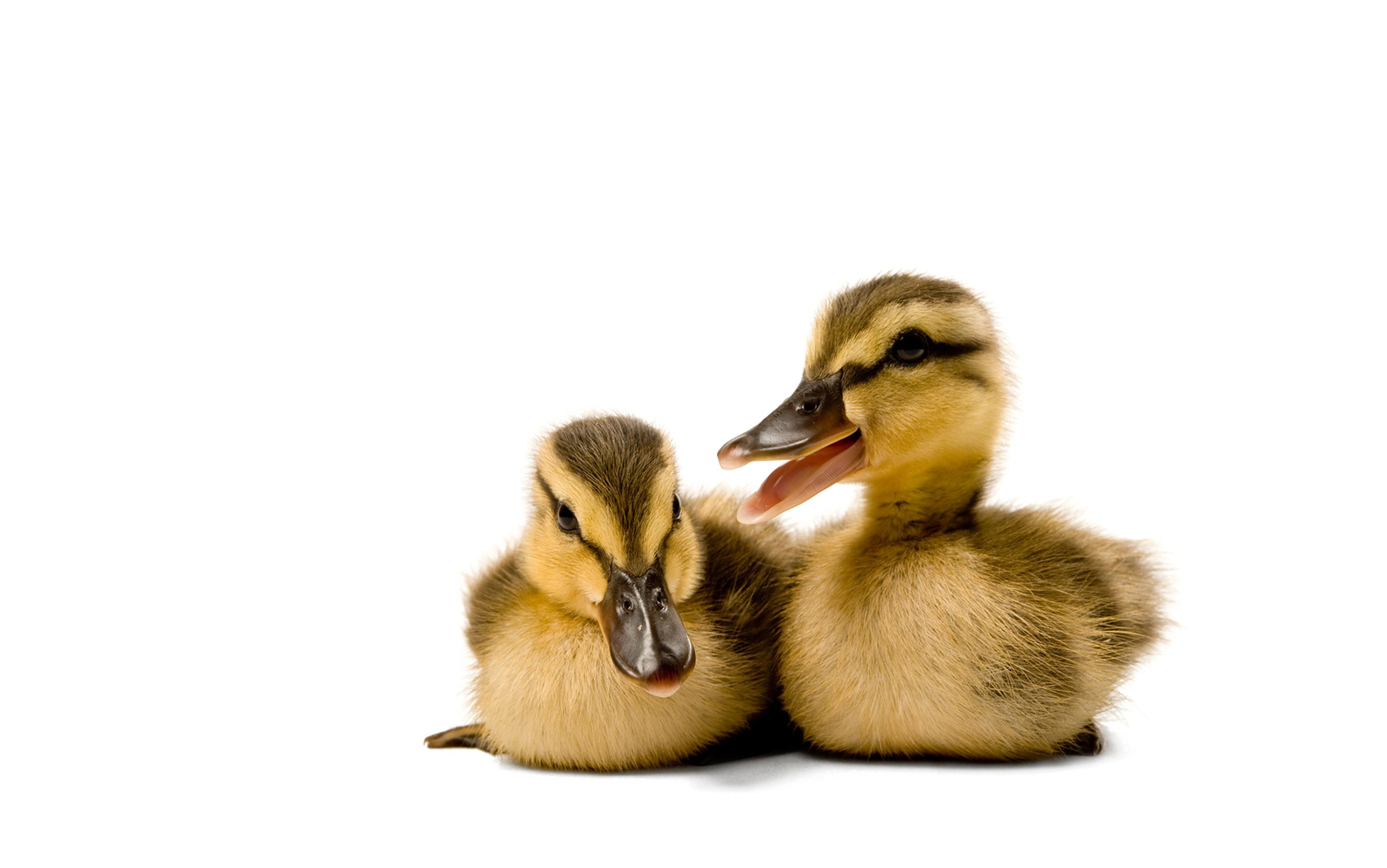Plato’s attempt 2,500 years ago to define the human as ‘a featherless biped’ had to be swiftly qualified –‘with broad flat nails’ – when Diogenes presented him with a plucked chicken. Many subsequent attempts at human self-definition have faced similar problems in relation to exceptionality. Yet lately, scholars have begun to conclude that while the difference between humans and other animals is great, it is one of degree, not kind. Steadily, the notion that humans were uniquely created in the image of the divine is dropping out of the Western world view, as it becomes clear that characteristics once thought to be unique to our species – tool use, language, culture – are found to occur among other species. Even so, one aspect of humanity has seemed indisputably ours alone: our capacity for self-conscious agency; that is, our ability not just to act on and influence the world, but to do so deliberately and reflectively.
Self-aware animal protagonists have always existed within the human world. Usually, however, they’ve been imaginary, and mostly they’ve appeared in the pages of children’s stories. Characters such as the talking animals in The Chronicles of Narnia (1950-56) by C S Lewis, for example, were relatively simple. For all their animal appearance, their thoughts, actions and emotions were largely indistinguishable from those of humans. Other stories have exploited differences in human and animal experience to teach moral or ethical lessons, by precept or example. In some cases, this involved close exploration of the inner lives of animal protagonists – the gradual civilisation of the wolf-dog in Jack London’s White Fang (1906), for example, or the mature suffering of the horse in Anna Sewell’s Black Beauty (1877). But more often than not, the author’s aim was to use the animal to explore the human, and humane.
T H White’s Merlyn transformed the wart (the young King Arthur) into (variously) a hawk, an ant and a badger so that the regent in The Once and Future King (1952) could learn more about the governance of human nature; the altruistic friendships in Charlotte’s Web (1952) by E B White gradually shaded into the conscious acceptance of individual mortality. Animals have also been deployed allegorically, to explore relationships between people (often depending on animals to say things that humans found hard to hear). Such childhood stories frequently acquire resonance as their readers grow. For example, when read in adulthood, Kenneth Grahame’s The Wind in the Willows (1908) provides just as devastating a critique of the shift from an agricultural to an industrial society as George Orwell’s Animal Farm (1945) does of the transition from capitalism to socialism.
Of course, animal allegories and stories featuring animal narrators are not confined to children’s literature. Books such as Felidae (1993) by Akif Pirinçci, The Plague Dogs (1977) by Richard Adams or Only the Animals (2014) by Ceridwen Dovey use nonhuman protagonists to explore aspects of human inhumanity to animals, while Carmen Dog (1988) by Carol Emshwiller and Pig Tales (1997) by Marie Darrieussecq specifically explore inhumanity to women. Yet within these accounts writers can also make intriguing efforts to explore what it might be like to view the world from the animal’s perspective, as in Pig Tales where the protagonist shifts from pig to person, and back again. The detective sheep of Three Bags Full (2005) by Leonie Swann retain an ovine logic throughout (just as the narrator of Felidae remains feline). The Many Selves of Katherine North (2016) by Emma Green examines the consciousness of a ‘phenomenaut’, someone who can project herself into the mind of a lab-grown animal body, unravelling the devastating and addictive impact of animal senses on human awareness.
In The Inheritors (1955), William Golding embarked on a sustained novelistic attempt to imagine a nonhuman consciousness among Neanderthals. Golding shows us a world where ego is integrated at the community, rather than individual, level. Understanding is based on collective experience, intense proximity and abiding empathy, while knowledge, concept and communication are kinaesthetic rather than cerebrally based. Golding’s Neanderthals are not self-conscious in the human sense – since they are not ‘human’. They are, however, active subjects and agents making their own histories and influencing those of others. Reading that novel is a breathtaking and disturbing exercise in trying to understand, rather than analyse, awareness.
The Inheritors presaged a new way of thinking that would spread among animal behaviourists, evolutionary scientists and eventually historians in the latter part of the 20th century. It turns on there being a difference between agency and consciousness – and between agency and subjectivity, or agency and individuality. Humans have the capacity to act as agents, because they are considered to know what they are doing and why they are doing it. But even though nonhumans possess individuality and consciousness, too, the absence of self-consciousness among them has generally been taken to preclude agency. However, as scholars and artists adopt less anthropocentric approaches to understanding how histories (and futures) are made, in the manner that Golding did in 1955, such thinking is now being challenged. Put another way, do literary efforts to create an embodied but nonhuman consciousness have any purchase in reality?
Past attempts by naturalists to investigate and describe the interior lives of animals tended to be treated as anthropomorphic exaggerations at best, and fictions at worst. The ‘nature-fakers’ row over standards for natural-history writing is a classic example. This was a vitriolic early 20th-century controversy that centred on the question of whether animals could self-consciously reflect on what they themselves knew. Could they teach, empathise and lie? And if they could, how could human observers know that this was what they were doing?
Naturalist-writers such as William J Long or Ernest Seton concentrated on anecdotal observations of individual animals whom they ‘sentimentalised’, and their work was condemned as ‘yellow journalism’ by people such as John Burroughs and President Theodore Roosevelt, who feared that such anthropomorphic popular natural history would distort the public’s understanding of animal behaviour. Animals, they argued, needed to be analysed and understood objectively, with the aim of establishing general laws of nature. Starry-eyed speculation about the inner lives of beasts had no place in the modern world.
Scholarly appraisals of animal thinking and behaviour reflected this approach. C L Morgan’s Introduction to Comparative Psychology (1903) stated that ‘in no case is an animal activity to be interpreted in terms of higher psychological processes, if it can be fairly interpreted in terms of processes which stand lower in the scale of psychological evolution’. Subsequently, the principle called ‘Morgan’s Canon’ dominated natural scientists’ laboratory study of animals. Considerations of animal consciousness, the motives that might underlie animal actions or animal awareness were rarely undertaken. As for the humanities and social sciences – disciplines concerned, above all, with understanding people – animals seemed largely irrelevant. Practitioners in the humanities studied literature, culture, communication – aspects of life in which animals appeared to play minor roles, or no role at all.
Only those who worked directly with animals – farmers, shepherds, horse-riders, dog-handlers, falconers – seemed ready to speak of the significance of animal individuality or animal personality. Not to mention calculation and intent. Close up, each animal is different, and the nature of the relationship between individual humans and specific animals is unique. However the tacit knowledge and practical experience of those who routinely handled animals had little wider influence. Even the complex animal characters and human-animal relationships in the internationally acclaimed work of the Yorkshire vet James Herriot (Alf Wight, in real life) were treated as largely fictional – rather than as a revelatory window into the deliberate wilfulness of working animals. Animals, it was accepted, acted out of instinct, possibly augmented by training, whereas humans had the freedom to choose between courses of action, and the insight to understand their choices. Only humans truly possessed agency.
Even as many scientists insisted on this parsimonious interpretation of animal consciousness, another approach to understanding animal life was developing. In the 1930s, Niko Tinbergen and David Lack began pioneering the systematic, scholarly observation of individual animals. In his bestselling The Life of the Robin (1943), Lack argued that in order to study animal life you had to know the animals individually. Colour-coded rings on the legs of each robin meant that the daily observations of individual birds could accumulate into individual histories, enabling Lack to set present-day behaviour in the context of past events. His studies, he noted as an aside, also provided him with a ‘great deal of pleasure’. Similarly, when in Curious Naturalists (1958) Tinbergen used coloured dots to identify individual wasps on the sands of Hulshorst in the Netherlands, he realised that this had transformed them ‘into personal acquaintances, whose lives from that very moment became affairs of the most personal interest and concern to me’.
These two men, founders in the fields of ethology and ecology, realised that individual identification was the first stage in adopting the animal perspective and exploring the lived consciousness of other species. Rather than using human experiences – that sense of self-conscious subjectivity – as their yardstick, they focused instead on individual behaviour as it occurred within the environment in which it had evolved. In many ways, they took the first steps towards being able to see what it might mean to be an agent in an animal’s world.
Different animals possessed different minds, often prioritising different senses
Tinbergen and Lack (among others) were critical of both field scientists who indulged in lazy anthropomorphism, and those who insisted on setting up ‘artificial standards of simplicity’. In particular, they objected to the dismissal of any apparently sophisticated animal action as ‘instinctive’. Such behaviour needed to be investigated, not marginalised: what was instinct, after all? At the same time, they argued that assuming parity between animal and human mental processes was not just wrong, but foolish. Lack was clear that speculating about an animal’s emotional state could provide valuable clues to guide future study, but one should never presume that a bird feels or perceives in the same way as a human.
Lack demonstrated the point with great elegance using a battered and stuffed robin, bought for a shilling in a junk shop. This was presented to individual birds to see how they would respond to a stranger’s presence; since the ornament itself never changed, it could, argued Lack, be used as a means of objectively testing robin personality or temperament. One day, however, it did change – fatally. An ‘exceptionally violent hen robin attacked [it] so strongly that she removed his head. For a moment, the bird seemed rather startled, but then continued to attack … as violently as before.’ Further investigations established that just a tuft of red feathers could provoke a brutal response that might continue even after the feathers’ complete disappearance. Lack wrote:
We tend to think that, clothed in a robin’s body, but retaining a human mind, we should do much the same things in much the same way … We tend to assume that the world the robin sees is much like the world which we see. Suitable experiments show how false this impression is. Even the empty air can contain a rival to be destroyed.
Tinbergen and others agreed: while their aim was to see the world with animal eyes, they worked with the caveat that animal mentalities were neither similar to nor less than those of humans. They were, instead, different – and different animals possessed different minds, often prioritising different senses. No matter how hard a human tried to see through animal eyes, they would find it impossible to figure out how a pig’s biography would smell.
Through the 20th century, the students and colleagues of Tinbergen and Lack continued to explore the natural behaviour of free-living animals. Some of these studies – of the chimpanzees of Gombe, the carnivores of the Serengeti, the orcas of British Columbia – have stood the test of decades, and the nature of the data gathered has begun to assume a fascinating form. In particular, individual identification and life-history recording is now central to the study of behavioural ecology, given its focus on studying individual reproductive success in situ. These studies are explicit efforts to record ordinary, habitual animal behaviour – grooming, eating, resting, not just sex, aggression or disaster – uninfluenced (as far as possible) by human activity. They study what animals do, and what it is to be an animal.
Still, the stories told by behavioural ecologists came to be studded with dramaturgical metaphors. Jane Goodall was one of the first to use such strategies in her popular writings – and was then accused of anthropomorphism for so doing. But she was not the only field researcher to think and write (at least popularly) in this way. Scientists spoke of the way that watching the interactions of individuals – the daily ‘soap opera’ – kept them going, despite the tremendous physical and mental strain of prolonged fieldwork. As they wondered what might happen next, and how the animals themselves might conceptualise past and present events, encounters between individuals became freighted with history. For Karen Strier, working with the muriqui monkeys of Brazil, an added dimension came when she realised that what she was seeing was not two adults hugging, but an embrace between a mother and her son. Craig Packer had a similar moment of revelation, looking at a single female lion curled under a bush and knowing that there sits ‘SBG, and all her tragic history’.
As the popular works of researchers such as Strier, Packer, Goodall, Hans Kruuk and Brian Bertram show, along with Cynthia Moss, Katy Payne, George Schaller, Roger Payne, Ken Norris, animal characters can emerge from such studies. Based on knowing individual animal histories, you can discuss animal relationships and personalities, and (carefully) speculate on motives and intentions: on the animal’s inner life and its capacity to act as an agent. You can even groom individual animals ‘for lives as biologist’s narks’, using them – in social-science research terms – as gatekeepers, conduits through which nose-blind humans could gain access to a wild animal’s sensory and social world.
By the end of the 20th century, scholars in the humanities and social sciences were becoming increasingly fascinated by the activities of animals in so far as humans depended on them. What they found was that, as Claude Lévi-Strauss had suggested in The Savage Mind (1962), animals were very ‘good to think’. Researchers examined the relationship between town planning and horse physiology; the creation and award of the animal’s Victoria Cross; the ‘hidden’ animal origins of meat in the context of intensified livestock production; or the role of rats in spreading disease, and locusts in destroying crops. Palaeoanthropologists speculated on the role that domesticated dogs might have played in Homo sapiens’ prehistoric rise to become the sole remaining hominins. Early modern historians also mapped the impact that imported European horses, sheep, goats and cows had had on the indigenous human populations of the Americas.
Many other aspects of human-animal relationships have now been scrutinised by historians, sociologists, linguists, geographers and anthropologists: the emergence of the pet industry; the changing appearance and functions of zoos; or the continuing significance of hunting and fishing to industrialised urban societies. Their results throw light on changing relations within and between human societies, as well as on the ethical and moral issues they posed. It is in short order becoming plain that human history has depended – in any number of ways – on the contribution of different animal species.
But does this mean that animals can be considered agents of history? Their contribution, after all, wasn’t planned or deliberate. Rats, for example, despite the best efforts of poison manufacturers to portray them as such, are not an invading army. And while the European colonisation of the Americas might have depended on the contribution made by livestock animals, those animals were not themselves conscious of their role. In this sense, the humanities’ turn towards animals has merely rendered human histories more inclusive. The subject matter has expanded, rather than a new perspective emerging. At most, such stories chart the way that humans have made use of animals, or those aspects of their lives that have interested human observers. Recovering, or accessing the lived experiences of nonhuman, nonverbal animals, and writing animal-focused histories, still seemed impossible.
Nonetheless, some scholars tried. As with the efforts of scientists to see the world from the animal’s perspective, scholars have drawn on ethology, on evolutionary theory and physiological studies, in a sustained attempt to write histories – or, with Sandra Swart, ‘horse-stories’ – from an animal perspective. They’ve called for a combination of methods (archives, experiments, their imaginations) to put themselves in the place of the embodied other. What if sound was tasted, or felt, as much as it was heard? What would social life be like, if meetings were haunted by the olfactory presence of absent friends (or enemies)? Alongside these attempts to record animal experiences, the question of intent and deliberation continues to cloud debates about whether animals can, in fact, be agents of their own history. Animals might have shaped human history, and might make their own history, but, especially in the age of the Anthropocene, they seem to do so under circumstances of human choosing.
The danger with the concept of ‘agency’ is the way it reifies an autonomous, disembodied human agent
This is less a problem with how we perceive animal consciousness, and more a product of the way we’ve privileged power and influence (economic, political and intellectual) historically in the West, mirroring how things are socially distributed. It is notable that, just as discussions of animal rights emerged in parallel with the civil- and equal-rights debates, so a concern with animal agency has echoed a recognition of the significance of the agency of women, black people and other minorities. And of the working classes.
The concept of agency is itself problematic, of course, since it emerged as part of the ‘universalising’ humanism of the Enlightenment, when to be human meant to be white, male and financially independent. A profound barrier to recognising the historical agency of socially and economically disempowered groups has come from the resulting assumption that ‘agency’ is synonymous with rationality, and the freedom to choose. Unsurprisingly, the concept of agency was tied (too) tightly to the historically contingent notion of the rational, liberal self, since questions about the distribution of agency and what it means to be a social agent reflect political and economic positions as much as philosophical or theoretical enquiries.
Taking animal agency seriously requires us to challenge the continuing presumption that agency is dependent on self-consciousness – indeed, even to question whether it can be located within an individual mind.
Maybe agency is an emergent property, the product of a chemistry between two individuals (a dressage horse and his rider, a bomb dog and her handler)? Or perhaps it arises out of a broader combination of social and ecological networks, where possibilities depend on the environment as much as on cognition, and where agency itself could arise from multitudes (a shepherd, a sheepdog, the sheep, the pasture on which they stand). The danger with the concept of ‘agency’, as it’s been traditionally conceived, is the way it reifies an (apparently) wholly autonomous, disembodied human agent. Does – or could – such an individual really exist, outside an (imaginary) thought experiment? In the absence of any other way of keeping body and mind together, to what extent are you free to ‘choose’ to work a zero-hours contract?
At the heart of human creativity is the desire to change the world, not just by altering the environment, but by shifting perceptions. In many ways, the veridical reality of the animal worlds imagined by novelists is irrelevant: far more important is the effort to conceptualise and empathise with alien ways of thought, and the impact that this has on the reader’s ethical and emotional sense of what it means to be human. What recent research has shown is the extent to which our humanity – our culture, politics and practices – is dependent on the actions and activities of animals. Indeed, much of what we consider to be uniquely human achievements might actually have emerged from our relationships, past and present, with different animal species.
For those of us who share our lives with pets, companions or working animals, managing our daily lives depends on recognising not just the needs, but the intentions, capacities and capabilities of the nonhuman – not least the extent to which we rely on such qualities. For the past century or so, these commonsense, lay understandings of animal agency have been marginalised as examples of sloppy anthropomorphism. It is now past time to take this tacit, non-expert knowledge seriously. By adopting a new approach to animal agency, we can develop new ways of thinking about multiple, distributed agencies and the way that they are remaking the world. In the age of the Anthropocene, we cannot afford to assume that these changes will always and forever be under conscious human control.
